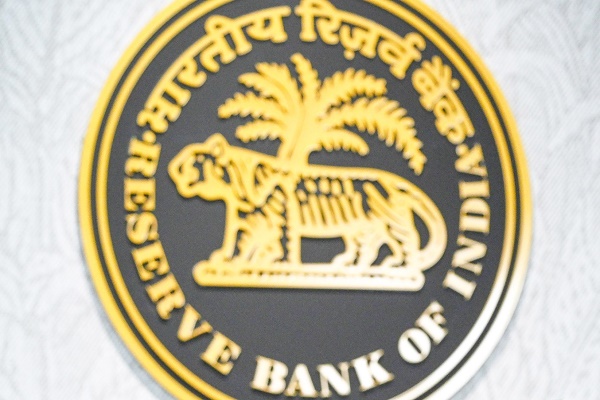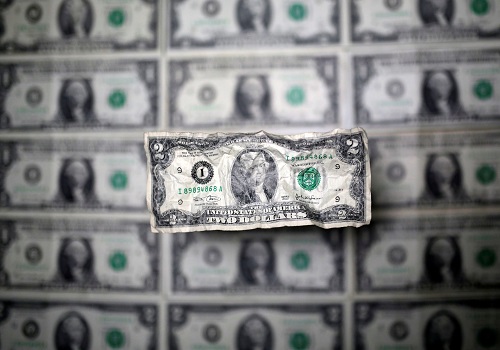Economy: Money Market and FX Weekly by Kotak Institutional Equities

-
System liquidity deficit eases amid RBI measures. Liquidity continued to remain in the deficit zone, but the tightness eased driven by CRR drawdown, RBI’s FX swap auction and net government spending, more than compensating for excise/customs related tax outflows. Average net LAF deficit eased to Rs0.97 tn for the last week as compared to ~Rs1.75 tn at the end of the week prior. Overnight rates fell by 34 bps to 6.26%, aided by RBI’s liquidity easing measures. Core liquidity (Net LAF adjusted for cash balances) is estimated to have turned marginally positive after staying in deficit zone over the last four weeks. Going into this week, we expect banking system liquidity deficit to ease marginally driven by RBI’s OMO purchases, although given the pressure on INR, expected RBI intervention may offset the improvement. While in February, we estimate core liquidity to remain near neutral to marginally in surplus, we estimate the core liquidity to again turn deficit from March warranting more measures by the RBI then.
-
Government cash balances moderate. For the week ended January 31, government cash balances fell to Rs1.3 tn from Rs2.4 tn in the previous week, driven by month-end government spending. Given the liquidity movements last week, we expect the cash balances to have remained steady at around Rs1.3 tn. For the current week, we expect cash balances to further moderate to Rs1.2 tn.
-
CIC normalizes. For the week ending January 31, CIC rose by ~Rs6.7 bn (CIC has risen by around Rs892 bn in FYTD25 compared to Rs421 bn in the same period last year). The current CIC outstanding at 36.0 tn is at 11.1% of GDP.

* Bond markets remain supported. Bond markets started last week on a positive note aided by softer US treasury yields and crude oil prices, alongside expectations of a dovish RBI MPC policy. US Treasury yields eased last week as amid mixed economic data and delays to the tariff hikes on imports from Canada and Mexico. Further, the US Treasury Secretary’s reference to the 10-year treasury yield being the key gauge of getting lower interest rates provided comfort to the markets suggesting limited upside. While paring some of the fall post the US NFP report, the 10-year treasury yield has fallen by ~12 bps from last week’s high of 4.60%. The domestic benchmark 10Y G-Sec yield softened by nearly 5 bps intra week to lows of 6.65% ahead of the policy. However, the in-line 25 bps of Repo rate cut in the absence of stance change and liquidity easing measures pared the gains, with the 10-year yield currently trading near 6.72%. Going ahead, we expect bond markets to remain supported amid (1) OMO purchases, (2) lower supply and (3) policy easing. However, global uncertainties could keep the overall range for rest of FY25 between 6.60% to 6.80%.
* Pressure on INR to continue. The FX space continues to be dominated by uncertainty surrounding the escalation of trade war and reaffirmation of a prolonged pause by the Fed. After reaching a one-month high at the beginning of last week at around 110, DXY strength eased through the week due to tariff delays, reaching lows of ~107.3. Today, DXY has opened stronger on the back of fresh tariff announcements by Trump on steel and aluminium, breaching 108 levels. FII flows remain neutral in the month of February as sell-off in equities has been countered by buying in debt by FPIs. (February witnessed net inflows of US$0.1 bn: equity: (-)US$0.9 bn, debt: US$1.0 bn). USDINR opened a tad below 88.00 levels today post fresh tariff worries. While RBI’s intervention managed to cap the break out above 88-levels for now, we expect near term volatility and INR depreciation to continue. We note that the accentuated moves in USDINR witnessed lately has brought the currency to near fair value. However, given the unrelenting global uncertainties in the near term we expect the pressure on INR to continue.
* Steady US labor report confirms a prolonged Fed rate pause; BOE provides a hawkish cut. Nonfarm payroll (NFP) additions in US for January was at 143K; lower than consensus expectations of 169K. However, upward revisions to previous two months, lower unemployment rate and robust momentum in average hourly earnings confirmed tightness in the labor market. Markets continue to price in two rate cuts by the Fed in CY2025. Separately, BoE delivered a hawkish 25 bps policy rate cut to 4.5%, revising inflation forecasts higher.
* Markets await India inflation data. This week, markets await January CPI data (consensus: 4.5%, Kotak: 4.5%), driven largely by deceleration in food inflation even as core inflation holds up. January WPI inflation is estimated at 2.9% and December IIP at 3.6%.
Above views are of the author and not of the website kindly read disclaimer


















